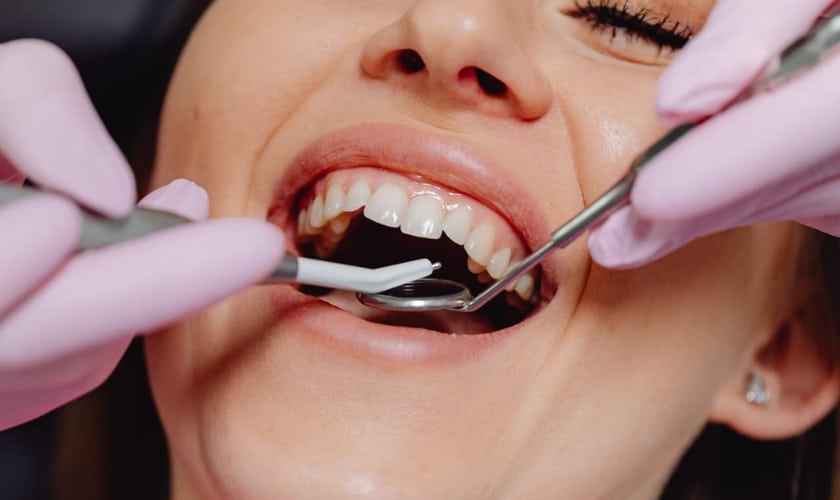
Are you tired of hiding your smile because of damaged or missing teeth? Are you looking for a solution that not only improves the appearance of your teeth but also promotes overall oral health? Look no further than restorative dentistry! This innovative dental specialty offers a variety of treatments to repair and replace damaged or missing teeth, resulting in restored confidence and improved quality of life. In this blog post, we’ll explore how restorative dentistry can help repair damaged teeth and improve oral health. Get ready to discover the transformative power of a healthy, beautiful smile!
Restorative dentistry is a branch of dentistry that focuses on the repair and replacement of teeth that have been damaged by decay, injury, or disease. Restorative dentists use a variety of techniques and materials to restore teeth to their natural strength, function, and appearance.
The most common procedures used in restorative dentistry are fillings, crowns, bridges, implants, and veneers. Fillings are used to repair cavities; crowns are used to cover damaged or misshapen teeth; bridges are used to replace missing teeth; implants are used to support artificial teeth; and veneers are used to improve the appearance of teeth.
Restorative dentistry can improve the function and appearance of your teeth, as well as your overall oral health. If you have damaged teeth, or if you are interested in improving your smile, please contact our office to schedule an appointment with Dr. Smith.
Types of Restorative Treatments
There are many different types of restorative treatments available to help repair damaged teeth and improve oral health. Some of the most common include:
-Fillings: A filling is used to fill in a cavity or tooth that has been damaged by decay. There are several different types of fillings available, including composite (tooth-colored) fillings, amalgam (silver) fillings, and gold fillings.
-Crowns: A crown is a type of dental restoration that covers the entire tooth. Crowns can be made from a variety of materials, including porcelain, ceramic, or metal.
-Bridges: A bridge is used to replace one or more missing teeth. Bridges are usually made from porcelain or metal and are supported by natural teeth on either side of the gap.
-Implants: An implant is a titanium screw that is surgically placed into the jawbone to serve as a replacement for a missing tooth root. A dental prosthetic (artificial tooth) is then attached to the implant.
Benefits of Restorative Treatments
There are many benefits to restorative treatments for damaged teeth. Restorative treatments can help to repair the damage and improve oral health. They can also help to prevent further damage to the teeth and improve the appearance of the teeth. Restorative treatments can also help to improve the function of the teeth and make it easier to eat and chew food.
Common Oral Health Issues and How Restorative Dentistry Can Help
There are a variety of oral health issues that can arise, and restorative dentistry can help to address these problems. One of the most common oral health issues is tooth decay, which can cause cavities and other damage to the teeth. Restorative dentistry can help to repair this damage and improve overall oral health. Other common oral health issues include gum disease, tooth loss, and TMJ disorder. Each of these problems can be addressed with specific treatments that are designed to improve oral health.
Preparation for a Restorative Treatment
When considering restorative dental treatment, it is important to consult with your dentist to ensure that the procedure is right for you and to determine the best way to prepare for it. Depending on the type of treatment, there may be different steps that need to be taken in order to ensure a successful outcome.
For example, if you are having a tooth filled, your dentist will need to clean out the cavity and then place the filling material. In order to do this, they will first numb the area around the tooth so that you won’t feel any pain during the procedure. Once the area is numb, your dentist will use a drill to remove any decay from the tooth. Once the decay is removed, they will then place the filling material and shape it so that it looks like a natural tooth.
If you are having a crown placed, your dentist will first need to prep the tooth by removing any decay or damage. They will then take an impression of your tooth so that they can create a custom-fit crown. Once your crown is ready, they will bond it to your tooth using dental cement.
It is important to follow all of your dentist’s instructions when preparing for restorative dental treatment. This will help ensure that you have a successful outcome and that your oral health is improved.
What to Expect After a Procedure
After a restorative dentistry procedure, patients can expect their teeth to look and feel better. In addition, they should expect their oral health to improve. Restorative dentistry can help repair damaged teeth and improve oral health.
What are the Costs Involved?
The cost of restorative dentistry will vary depending on the procedure being performed and the severity of the damage. However, in general, restorative dentistry is less expensive than traditional dental procedures such as braces or implants. Additionally, many insurance companies cover at least a portion of the cost of restorative dentistry, making it more affordable for patients.
Tips for Maintaining Oral Health After Treatment
1. Keep up with your oral hygiene routine. This means brushing at least twice a day, flossing daily, and using mouthwash.
2. Be sure to see your dentist regularly for cleanings and checkups.
3. If you have dentures, be sure to clean them daily and soak them in a denture cleaner overnight.
4. Quit smoking if you haven’t already. Smoking is terrible for your oral health.
5. Eat a healthy diet full of fruits, vegetables, and whole grains. Avoid sugary snacks and drinks as well as acidic foods that can damage your teeth’ enamel.
Conclusion
In conclusion, restorative dentistry is a great way to repair damaged teeth and improve your overall oral health. It can help prevent further damage from occurring and restore the strength and beauty of your smile. With so many options available, there’s sure to be one that meets your needs. If you suspect you have any dental issues or would like to learn more about how restorative dentistry can benefit you, speak with your dentist today.
Restorative dentistry is the branch of dentistry that focuses on the restoration of damaged teeth and oral tissues. This can include procedures such as dental fillings, dental crowns, dental bridges, and dental implants.
Restorative dentistry can help repair damage to teeth caused by decay, trauma, or wear and tear. Procedures such as dental fillings and dental crowns can help to restore the strength and function of damaged teeth.
Restorative dentistry can improve oral health by restoring damaged teeth and oral tissues. This can help to improve chewing function, speech, and overall appearance. Additionally, restoring damaged teeth can help to prevent further tooth decay and gum disease.
